Image Scroll on JohnPaulCaponigro-Antarctica.com
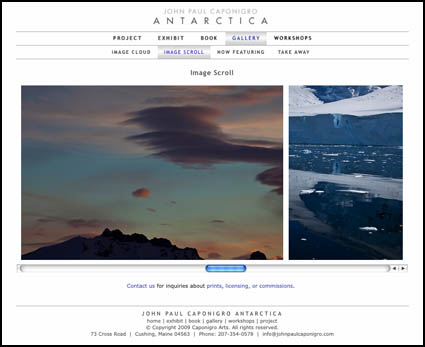
Scroll through a dozen new images in this new online gallery at johnpaulcaponigro-antarctica.com.

Scroll through a dozen new images in this new online gallery at johnpaulcaponigro-antarctica.com.
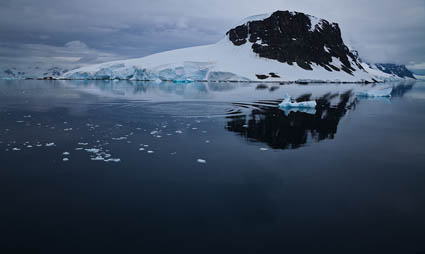
A new online gallery at johnpaulcaponigro-antarctica.com features my comments on a recent image.
“I was on the Ocean Nova with four other teachers and about 75 students. We were coming up through the Neumayer Channel, a little more than halfway through our trip south of the Antarctic Circle. A whale moved past us …”
See them both here.
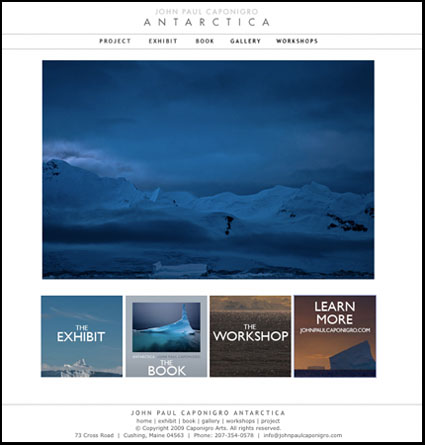
Last night during an inspiring evening at Photoshop World’s Fine Art of Digital panel I announced my new website johnpaulcaponigro-antarctica.com. It’s got information on my project including …
an upcoming workshop
a traveling exhibit
a book
4 different galleries.
There’s much more to come!
A blog.
Important facts on the region
Google maps
An Antarctica alumni group exhibit
Stay tuned to my blog and my free enews Insights for new announcements.
Get a full list of Photoshop World cobloggers here …
Read More
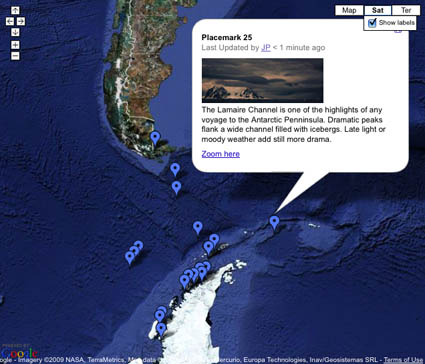
I know, “The map is not the territory.” Still, I love maps. I love them even more now. Google Maps and Google Earth has changed the nature of maps. You can explore my Antarctica Google Map and follow my course and destinations, enhanced with images and comments. To believe it, you have to experience it! It’s still in process. Watch it evolve!
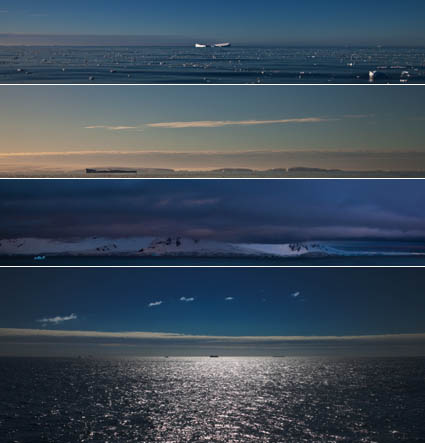
Three voyages to Antarctica yielded over 250,000 exposures. Would you like to see them all? I’m kidding! I wouldn’t do that to you! Selecting only the best images has been a real challenge. Does it have graphic impact? Does it tell an important aspect of the story? Is it repeatable with variation? Is it repetitive? All good questions. For my book Antarctica I settled on 100 images. More seemed to tire viewers. Even though I’ve released more images, in the book I published fewer to make it a more effective experience. More is less. Less is more.
Here are a few images that didn’t make it into the book.
Preview or purchase the book here.
Email info@johnpaulcaponigro.com to reserve your space in my 2011 Antarctica workshop.
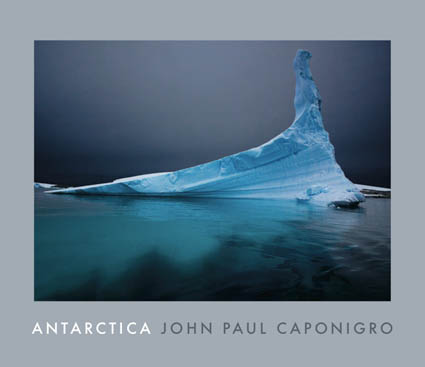
My book Antarctica is printed one copy at a time by Blurb. It’s the second edition with twice as many images. 100 images. 8×10″. Simple text. Heavily supported by my website.
Sometimes books include important facts about a region; my website has an extended essay collecting essential information about Antarctica; there’s no space limit on the web and everything connects to something more. Sometimes books include maps; my website has an Antarctica Google Map that you can pan and zoom, enhanced with commentary and images. Sometimes books include journals of a voyage; my website has several types of journals including highlights from three voyages and a set of live blog posts. Sometimes books include personal statements by the author; my website let’s you hear me speak. Sometimes books include recommended resources; my website has a list of recommended reading list and a set of links to the best climate change resources on the web and things you can do to help.
Did I create a website to support a book or a book to support a website? I keep thinking. Print is high resolution and low density. The web is low resolution and high density.
Websites don’t make books obsolete, but they’re certainly changing the function, sometimes the form, and more and more the production of them.
What’s left in this book is an exceptionally clean presentation of images with compelling juxtapositions and sequences in an unpowered form that you can comfortably touch, hold, share, and keep in your field of vision for extended periods of time. You live with books very differently than you live with websites. This book is worth living with.
Preview or purchase my book Antarctica here.

We need to shift our focus away from politicians to scientists – the real experts. I’ve encountered professional scientists, from climatologists, geologists, glaciologists and biologists, to name a few, who have shared data that indicates the polar regions are undergoing rapid change and this heralds dramatic global changes. Though there’s debate about why things are changing, how much they’re changing, how fast they’re changing, and whether we’ve seen this kind of change before, I have yet to meet a single scientist who debates that climate change exists. The scientific communities understanding of climate change is advancing at a very rapid rate; old models and predictions are continually being updated based on better and better information. There is growing concern in the scientific community. We need to make funding relevant scientific research to get more high quality information one of our highest priorities.
Publicly, the debate has shifted from “Does climate change exist?” to “How much does man contribute to climate change?”. We need to seriously consider another very practical issue, whether climate change is influenced by man, a little or a lot, given that it exists, “What are we doing to prepare for climate change?” Climate always changes. And climate changes human history.
Find information from the experts here.
Find what you can do to help right now.
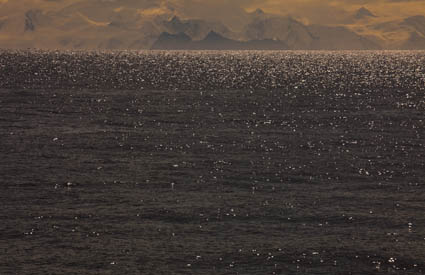
In my boyd of work Antarctica, I’ve limited my photographic practices to the standard practices accepted by most editorial photographers and expected by most media outlets: cropping; despeckling but not retouching; ; noise reduction; sharpening; little or no local color adjustment; no compositing, except for panoramic stitching. I’ve deliberately not released obviously related highly altered images within this body of work, nor do I currently display highly altered images in the same context. Interestingly, there are few clear published guidelines for what is considered acceptable practice today, even though there are many controversies over specific examples released by various media outlets.
In many ways, contemporary culture is experiencing a media crisis. Standard media channels no longer enjoy the credibility they once did. There are fewer and fewer of them and they are operated under continually shrinking budgets, while trying to respond to demands for increasingly diverse content and increasingly rapid response. Now more than ever we need a rigorous and sustained dialog on media practices, from creation through delivery, from professionals and amateurs alike. And we need new media products. Many of us today have become outsider journalists or non-professionals who impact the media sphere. New technology has enabled us to share our images with a wider public through unvetted channels. This is changing media, culture, and history. Blogs broke the news of an American president’s infidelities. The Associated Press released software applications that allow anyone to upload images from a cell phone for possible use in news media outlets. The use of the social network Twitter shifted political events in Iran. In many respects, I’ve become an outsider journalist. I’ve shared my work in Antarctica in many ways; fine art exhibitions; limited edition posters; publications featuring fine art; print on demand books; lectures at universities, trade organization meetings, and trade shows; blogs, including live posting from Antarctica; social networks; accompaniment to technical literature; and advertising for new technology to name a few. I hope to raise awareness and stimulate constructive dialog about media issues at the same time I raise awareness of the subjects of my work.
To one degree or another we are all involved. We all have a role to play in evolving media; at a minimum we consume, discuss, and value it; at a maximum we produce it. I encourage you to increase your awareness of and involvement in these issues. We enjoy extraordinary possibilities, freedoms, and responsibilities.
Read more here.
Get priority status in my Antarctica 2011 workshop.
Email info@johnpaulcaponigro.com.
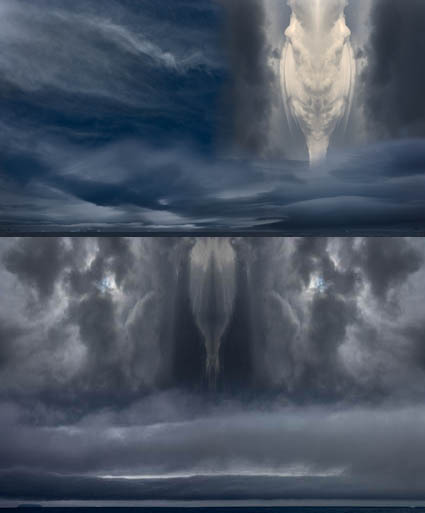
These images use elements drawn from Antarctica but are intended to be seen as universal rather than location specific.
I’ve produced many highly altered images from material shot in Antarctica, but I don’t present them with images from my body of work entitled Antarctica. I also don’t title them Antarctica. Antarctica is the first body of work I’ve produced that uses classic place and date titles. That type of title doesn’t adequately describe a majority of images I make. So, most of my images are titled with a series name, usually describing a process not a thing, and an order of creation number.
Get priority status in my Antarctica 2011 workshop.
Email info@johnpaulcaponigro.com.
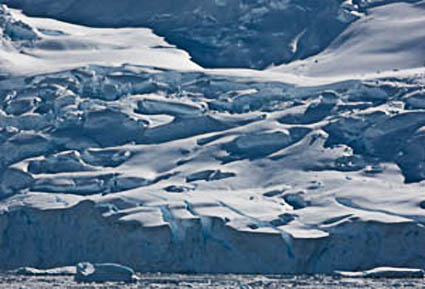
“There is a profound sense of privilege that comes from being in the presence of such rare beauty. It touches you deeply. Witness to the extraordinary, you leave changed – for the better. It’s a blessing born of grace and giving birth to more grace. It’s as if you’ve been given a gift and you feel compelled to keep giving it.”
Read about the highlights from three voyages to Antarctica.
Each voyage was very different from the other, even though we returned to some of the same locations.
Get priority status in my Antarctica 2011 workshop.
Email info@johnpaulcaponigro.com.